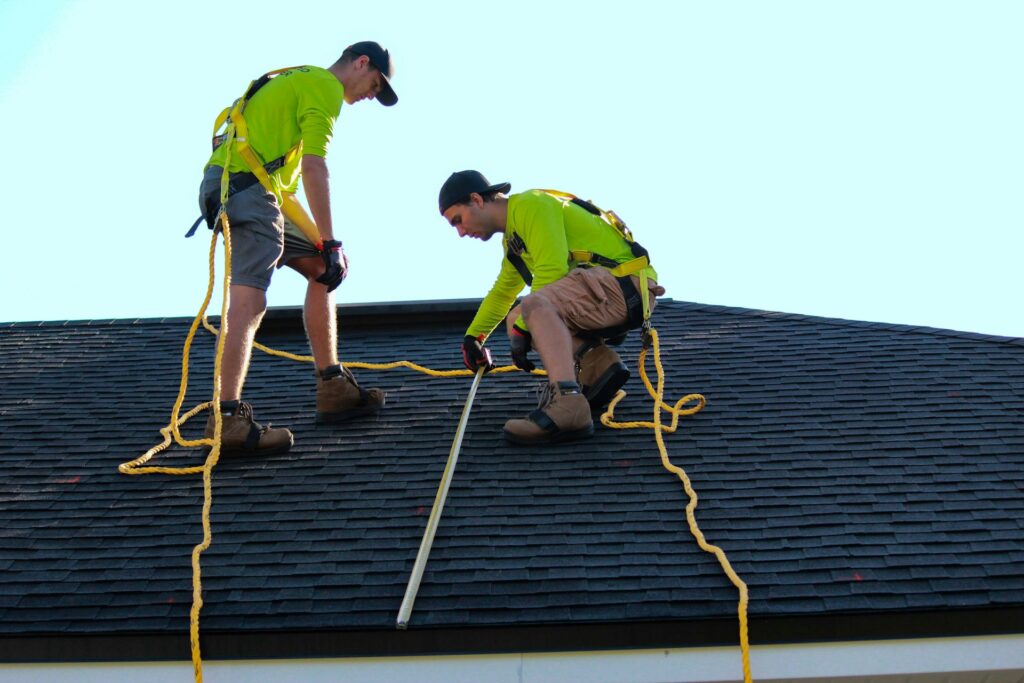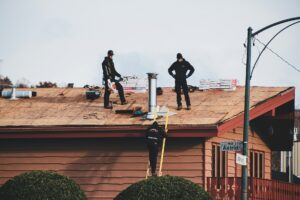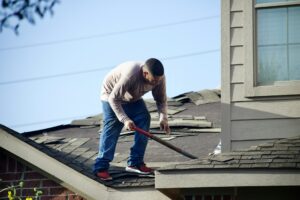Autumn in Portland beckons a time of transition. The crisp mornings and earlier sunsets signal the end of summer’s dryness and the beginning of much-needed rainfall. Yet, for many homeowners, this seasonal shift also sparks a crucial question: “Is my roof ready for the coming rains?” September is when the dry spell starts to fade, making it your prime window for preventive maintenance. Taking a little time now can help you avoid expensive delays or damage once the heavier rains settle in.
Below is a comprehensive, step-by-step roadmap to guide you from end-of-summer checks to fall-readiness. As a Portland homeowner, you’ll find these insights especially pertinent, since our region’s climate comes with unique challenges. Even better, a few straightforward tasks ensure you’re well-prepared and protected for the months ahead.
If you’d rather leave the advanced tasks to seasoned professionals, HOMEMASTERS offers thorough roof inspections during the critical fall period. Their team specializes in understanding Portland’s rainy-season nuances and can help spot small issues before they escalate.
Understanding Portland’s Seasonal Roof Challenges
Nestled in the damp Pacific Northwest, Portland experiences distinct seasonal changes that place particular demands on roofs. Summers are dry and sometimes unusually warm, causing roof shingles and other materials to expand. By contrast, fall ushers in cooler weather and an almost guaranteed onslaught of rain, causing those same materials to contract and frequently revealing minor or hidden vulnerabilities.
Temperature fluctuations:
The transition from hot afternoons to cooler nights affects roof materials over time. Shingles, flashing, and sealants can crack or warp, creating small openings for water.
High humidity:
Portland’s moisture content in the air can exacerbate mold, mildew, and algae growth on shingles, especially if they haven’t been cleaned or inspected regularly.
Year-round rain episodes:
Sporadic showers throughout the spring and fall mean that any small crack or damaged shingle can quickly become a leak hazard.
These factors combine to make the roof particularly susceptible to water intrusion during the fall. Identifying small problems early, particularly during September, can help keep your home well-protected and your energy bills in check.
Critical Inspection Points for Fall
A short but targeted inspection can reveal how your roof held up against the summer sun and what areas are most prone to difficulty once the rains pick up. By focusing on these key areas, you’ll be one step ahead of potential water damage.
Shingle Condition:
Examine for curling, cracking, or missing pieces that can allow moisture to seep below the surface. Some shingles also become discolored or start losing granules, indicating aging or damage.
Gutter System Readiness:
Clogged or sagging gutters can send water splashing back onto the roof or down the side of your home. Portland’s fall foliage creates additional debris, so ensure your gutters and downspouts are clear and securely fastened.
Flashing and Seal Integrity:
Pay close attention to areas where the roof meets vents, chimneys, or skylights, as cracks in flashing or compromised seals often become the main entry points for water.
Attic Ventilation Check:
From inside the attic, look for signs of moisture stains or mildew. A poorly ventilated attic can trap warm, damp air, accelerating roof deterioration and interior mold growth.
If you notice potential issues but aren’t comfortable diagnosing them further, consider reaching out to roofing professionals. HOMEMASTERS conducts thorough inspections that cover these areas in detail, helping you avoid mid-winter surprises.
Portland’s Most Common Fall Roof Issues
Across the city, homeowners often encounter a handful of distinct roof problems during the fall. Staying familiar with these typical trouble spots can spare you time and money.
- Moss and Algae Growth
- Portland’s damp climate is a haven for moss and algae. These organisms can lift shingles, allowing moisture to seep underneath. Removing moss early, often with specialized treatments or brushing, helps extend your roof’s lifespan.
- Debris Buildup
- Your roof and gutters collect leaves, twigs, fir needles, and other particles. When left unattended, these clogs can cause water to pool and accelerate shingle damage. Simple cleaning or leaf-guard installation can prevent accumulation.
- Leaky Flashing
- Over time, the caulking or metal around chimneys, skylights, and roof valleys may loosen. Even a minor flash leak can lead to significant damage if neglected. Quick sealing or flashing replacement can often fix the problem.
- Granule Loss
- Roofing granules help guard shingles against the sun’s UV rays. Excessive granule loss, sometimes visible in gutters as a sandy residue, hints that your shingles are reaching their limit.
According to the National Roofing Contractors Association (https://www.nrca.net/), proper maintenance can reduce the likelihood of extensive roof damage by 50% or more. In Portland’s damp environment, these statistics often ring particularly true.
The September Advantage for Roof Repairs
September in Portland typically offers a serene mix of cooler weather and lingering sunshine. This understanding can be your roofing trump card. Why?
Less Rain Disruption:
The showers haven’t arrived in full force yet, giving contractors a clear schedule to complete projects efficiently.
Contractor Availability:
Many homeowners hold off scheduling repairs until they spot leaks in late fall. By acting in September, you often benefit from less competition for contractor time, improving the chance of swifter service.
Material Efficiency:
Roofing materials seal and set better under stable weather conditions. Shingles and adhesives require moderate temperatures and low moisture levels to adhere properly.
If you’re contemplating more extensive repairs or a full roof replacement, scheduling it in September maximizes the likelihood of success. By contrast, mid-winter roof work in Oregon can be complicated by constant rain and cold spells. Instead, an early-fall timeframe keeps your project running smoothly, often saving time and labor costs in the long run.
DIY Maintenance vs. Professional Inspection
A little DIY spirit goes a long way in routine home upkeep. However, it’s important to know where your efforts can be both safe and effective, and when it’s best to hand the job to an expert.
Tasks You Can Manage Yourself
Gutter Cleaning:
Armed with a stable ladder and protective gloves, you can remove leaves and debris from gutters and downspouts. Ensure you have a partner for added safety, particularly if you are new to ladder work.
Simple Shingle Check:
From ground level, or carefully from a ladder, use binoculars or your phone’s camera zoom to look for curling or missing shingles. Spotting obvious damage early helps you initiate timely repairs.
Moss Removal:
A gentle push broom or specialized moss-killing product can help keep growth under control. Avoid pressure-washing the roof, as it can dislodge granules and compromise shingle integrity.
When to Call the Professionals
- Persistent Leaks or Large-Scale Damage: If you spot interior leaks, widespread moisture damage, or suspect structural issues, contact a reputable roofing contractor like HOMEMASTERS right away.
- Flashing and Seal Checks: Properly installing or repairing flashing around vents, chimneys, or skylights often requires specialized knowledge and equipment.
- Advanced Repairs: Shingle replacement, decking repairs, or major gutter overhauls demand expert skill to ensure your roof remains watertight under heavy rains.
Professional roofers also have access to higher-grade materials and are versed in local building codes. The Oregon Department of Consumer & Business Services (https://www.oregon.gov/dcbs/) provides guidelines on the licensing and insurance requirements for reliable contractors, ensuring you get the specialized help you need.
Preparing for Portland’s Rainy Season
Fall is only the beginning of Portland’s extended rainy season, which typically lasts through March. Taking a “whole-home” approach to preparation can keep you comfortable and dry, while stabilizing energy costs.
- Check Insulation: As temperatures drop, well-insulated attics and walls keep your living space warm and also reduce condensation along the roof’s interior. Insulation has the added benefit of preventing ice dams in colder, higher-elevation neighborhoods.
- Ensure Downspouts Divert Water Away: Place splash blocks or extension pipes to channel water several feet away from the foundation. Water that pools at the base can lead to structural concerns over time.
- Trim Overhanging Branches: Portland’s lush vegetation often results in branches brushing the roof, depositing debris or damaging shingles during storms. Remove or prune overhanging limbs for better roof airflow and reduced shingle wear.
- Window and Door Sealing: While not strictly a roofing matter, ensuring all entry points, windows, doors, and exterior vents, are sealed prevents moisture intrusion from side spray. This measure broadens your protection during heavy and wind-driven rains.
By approaching roofing and related tasks holistically, you defend each corner of your home from autumn’s first drizzle all the way to March’s final downpour.
Cost Considerations and Planning
Maintenance and repair costs can vary widely, depending on factors like roof size, materials, and the scope of damage. That said, strategic budgeting often pays dividends.
Routine Maintenance Costs:
Gutter cleaning, minor moss removal, and straightforward inspections typically run a few hundred dollars or less. Many homeowners opt for semi-annual roof checks, one in spring and one in early fall, to catch sudden weather-related damage.
Common Repair Costs:
Replacing damaged flashing, fixing small leaks, or repairing a small section of shingles can fall in the mid-hundreds to low thousands. Essential repairs, especially when spotted early, are less expensive than full replacements.
Full Roof Replacements:
Depending on your roof’s complexity, materials, and square footage, a new installation in Portland can range into the tens of thousands. However, older roofs reaching the end of their 20- to 30-year lifespan might benefit from a replacement to ensure longevity and safety.
Budget Planning:
Setting aside 1% to 3% of your home’s value each year for upkeep, including roof concerns, can help you manage unexpected repairs. Approaching your roof as an investment, not an afterthought, often yields big savings.
If you suspect you might need more substantial work, prioritize an inspection before fall rains arrive. You’ll gain clarity on costs, materials, and timelines without the pressure of urgent leak repairs forcing you into quick decisions.
Conclusion
Maintaining a resilient roof in Portland’s climate isn’t merely about quick fixes; it’s a proactive measure that safeguards your greatest investment as the seasons shift. A little preparation in September can spare you from disruptive headaches, property damage, or emergency repairs later in the winter. By focusing on shingle condition, flashing checks, and gutter clearance, you create a solid defense against the relentless wet months ahead.
Act now to keep your home comfortable and your peace of mind intact, especially before the first major rainfall hits. Whether you handle simple tasks on your own or call in experts for professional repairs, the ultimate goal remains the same: a sturdy, leak-free rooftop to weather Portland’s rainy season with ease.If you’d like a thorough home renovation consultation or need assistance with any aspect of roof maintenance, HOMEMASTERS is here to help. Their specialized fall inspection services give you tailored insights, ensuring your home remains cozy and dry all season long. By taking the right steps now, you’ll confidently greet every pouring rain with the assurance that your home is well-protected.




